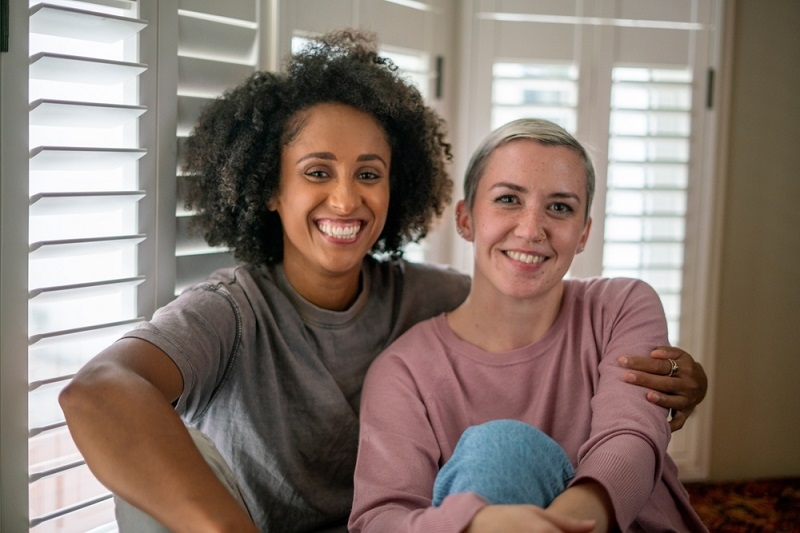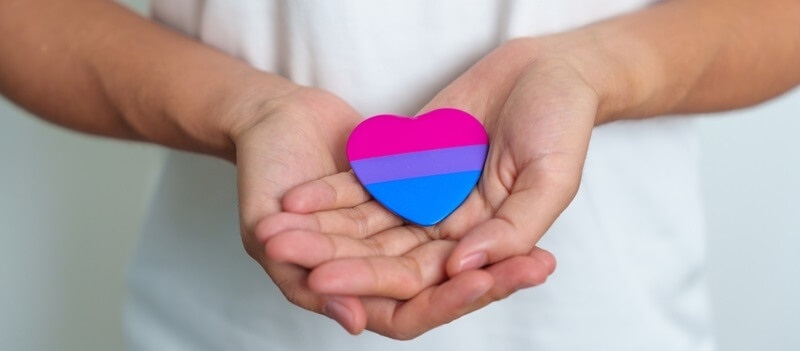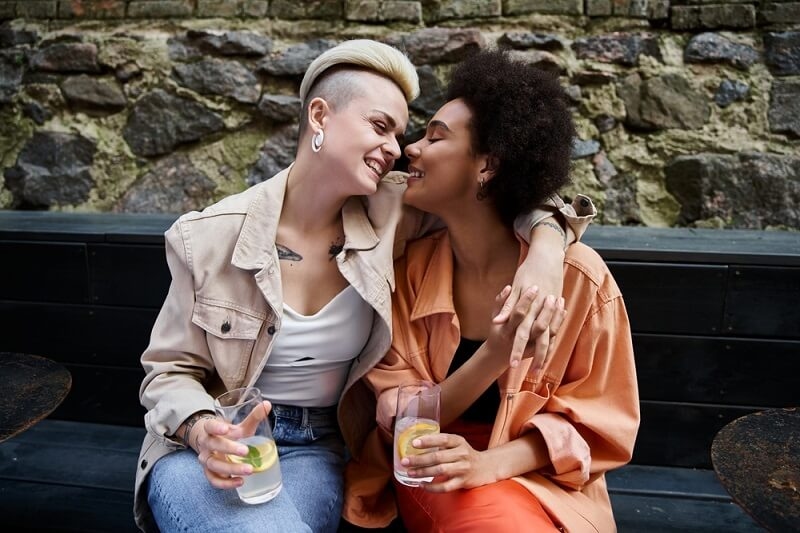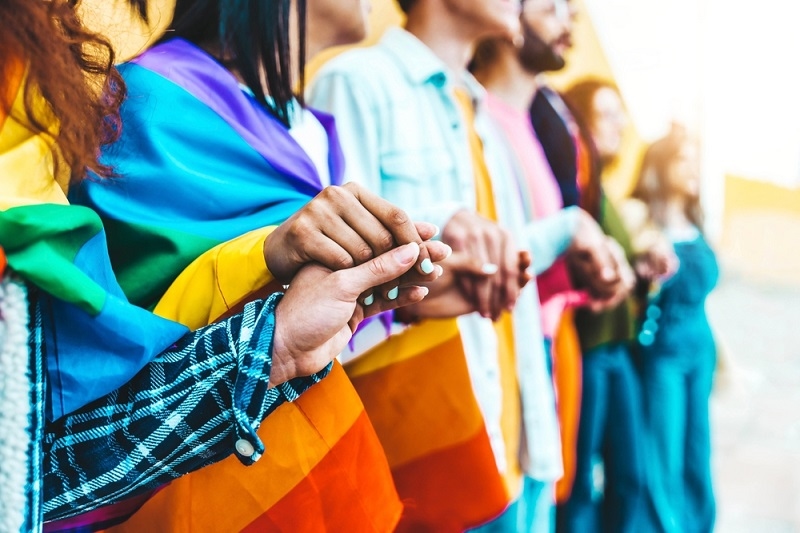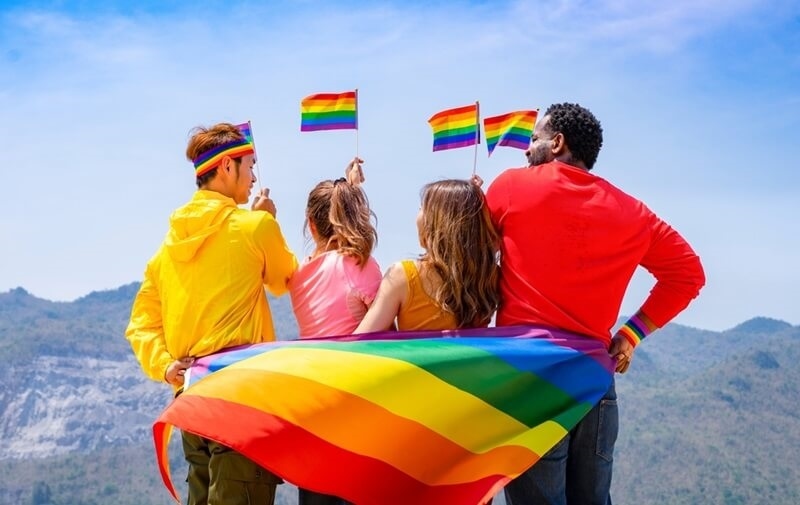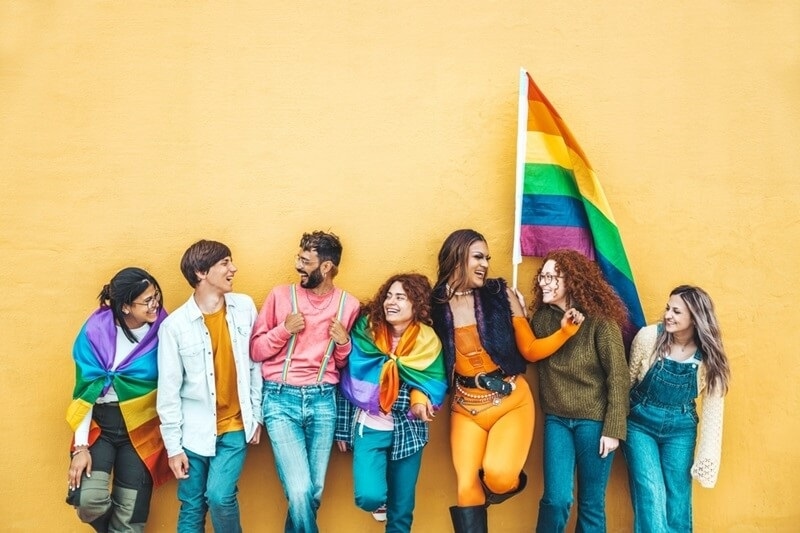Lesbian Marriage: Gender Roles, Stages, And More

Couples living in a lesbian marriage share several common features with heterosexual couples. The daily activities of their respective lives do not differ a lot. But their social context varies by a significant degree. This is mainly because of the influences of the prevalent heterosexual norms and expectations of roles of each gender in a relationship and marriage. Most lesbian couples may get a lot of stress if the daily support system is not present in their lives. This includes social, economic, religious, legal, and familial support. The members of such lesbian marriages have seen a lot of prejudice from society. They have successfully dealt with it in their own methods. But there is always the effect of minority stress present in them. It is the stress of living with social conditions that are negative or harmful for them. There are many such lesbian marriages that keep enduring and are as stable as any usual heterosexual marriage. This is in spite of staying in a hostile environment. This is great evidence of the overall resiliency of the members involved in a lesbian marriage.
Gender Roles in a Lesbian Marriage
The usual gender roles state that men are instrumental and women are relational in a marriage. A few truths in the gender-related assumptions can also be utilized to find out more about lesbian marriages. The psychological femininity shows that there is a commitment to the relationship. It is a tendency to fit the requirements of a partner. It tries to solve the issues between them. Contrastingly, psychological masculinity reflects the absence of emotionality, independence, and competition within such as relationship. When any issues happen, the people involved in such a relationship tend to allow the conditions to decline further or end the partnership. Couples in lesbian marriages rely on social exchange. This includes doing some things for each other rather than relational or emotional factors for the satisfaction of each other. When any member takes the stereotypical masculine role, there are inevitably some difficulties in the relationship. This includes a requirement for control, high competition, and strategies of distancing.
But it is vital to analyze the other issues that also play a major role between both the partners. This includes immigration status, age, education, social class, religion, cultural background, and ethnicity. Such a similarity in gender roles and physical sex conditioning permits couples to have a high level of rapport in the beginning and helps them to merge deeply with each other. This is because they know what pleases a person of their own gender and can respond, give, and understand. A long period of experiencing loneliness in the closet and thinking that they will never find anyone to love them leads to a high level of bonding. The expectations, in the beginning, are very high. So the disillusionment is also similarly high when the initial passion subsides.
Stages in a Lesbian Marriage
Usually, it takes a long time after the initial awareness of being attracted to the same sex for any person to advance through a lot of phases to completely reach the identity of a sexual minority. The discrepancies at this stage are usual for many couples involved in a lesbian marriage. This is because a lot of these couples get together before they may have completed their own growth of identity. This results in the members of a lesbian marriage going through their personal sexual orientation development while also navigating through the various challenges of a constantly evolving relationship. The issues that may arise include those of loyalty and betrayal. But there are very few times that couples in a lesbian marriage will see complexities in the discrepancies of stages. These differences usually lead to some conflict regarding the type of openness each of the individuals finds acceptable when it comes to friendships, community, employment, and family; relationships.
Most unions can usually overcome these types of conflicts. But there are many that are unable to do so. As with any heterosexual union, the differences between the partners during various stages of a lesbian marriage are common. For instance, one would want greater separateness or independence, and the other is clinging on or does not like the differences. It may also be that one has started to see personal growth, and the other partner sees this as abandonment. One of the partners in the relationship may want more self-expression. The other partner may want to avoid conflicts in the relationship and maintain harmony. Also, some gay and lesbian people are scared of getting too close in their relationships. This is because it keeps reminding them of their suffocating lives during their earlier times.

How Can a Therapist Help in a Lesbian Marriage?
Any professional mental healthcare provider will be quite sensitive to any issues being faced by the couples. He will be completely aware of the drawbacks of the usual heterosexual bias. He will treat any couple involved in a lesbian marriage in the right manner. There are no special treatments for the couples involved in such a marriage. The methods utilized with the usual heterosexual couples can also be utilized by the lesbian and gay couples. But the importance of taking into account socio-cultural and developmental variables also cannot be underestimated. Any therapist who has experience will be quite sensitive and knowledgeable about these effects. Any therapist will examine the overall environment and conditions of lesbian marriage based on these factors that have already been mentioned. They will study all the levels of the development of the partner. They will also look at the external factors such as alienation or support from friendships, workplace, community, or family. They will look at the presence of physical or mental sickness or any signs of domestic violence.
There may also be intimacy issues and discrepancies regarding the stage of the relationship between the partners. The issues regarding lesbian and gay couples will be addressed in a different manner. This is because several stressors present in life may play more of a role involving gay couples instead of lesbian couples and vice versa. For instance, there are many lesbians that often get a lot more anxiety than people involved in a gay relationship regarding the reactions of various family members to the issue of sexuality. Also, gay people reported more stress on harassment, violence, and issues related to HIV than lesbian couples. The therapist will also talk about any multiple social identities. This is an important factor that must be considered. For instance, one of the members of the lesbian marriage may be biracial. It may be that they are not able to reconcile a minority sexual orientation with any religious identity. It may even be that the members of the couple race differently from each other in a cultural manner. The usual diversity with reference to the relationship or the wider culture may also be an issue.
They may be other forces that prevent the couple from having social privilege. There are also major internal differences that may happen between the couple members. There are also concerns about socioeconomic standing, education, age, immigration status, disability, health condition, worldview, culture, ethnicity, and religion. There may also be some need for support from the family in several areas. A professional therapist can help the couples involved in a lesbian marriage experience that their fear of closeness is not so unusual for the stage of the relationship they are in and the degree of bias placed by society on such relationships. This will help the client not assume that something is an issue with the marriage. After this, they can start to look at their issues from a wider perspective.

Conclusion
Lesbian marriages survive and do very well despite a lot of challenges that they face from society on a daily basis. This is evidence of their resolve to keep the marriage alive. More female couples than ever before are reiterating their commitment to each other. They are increasing their intimacy and mutuality with lesbian marriage.






